
Bidet Buyer’s Guide: How Bidets Work, Types, and How To Choose
Last Updated: Dec 23, 2025Bidet Buyer’s Guide: How Bidets Work, Types, and How To Choose
Thinking about adding a bidet to your home or light-commercial space but not sure where to start? This unbiased buyer’s guide explains how bidets work, compares attachments, bidet seats, and integrated bidet toilets, and walks through the features that actually matter for safety, reliability, and long-term performance—so you can avoid low-quality options and choose a bidet that fits your budget, plumbing, and comfort needs.
Table of Contents
- Key Summary
- TL;DR
- What is a bidet and how does it work?
- Main types of bidets: attachments vs seats vs integrated toilets
- Electric vs non-electric bidets: which is better?
- How to evaluate bidet build quality and durability
- Bidet safety fundamentals: water, electricity, and hygiene
- Features that actually matter vs marketing extras
- Why very low-cost bidets often underperform or fail early
- How to choose the right bidet for your bathroom
- Installation and maintenance tips for long-term reliability
- Comparing established bidet brands vs generic options
- Bidets in light-commercial settings: what to consider
- Environmental and comfort benefits: beyond the gimmick
- Putting it all together: building a reliable bidet short list
- Are bidet attachments worth it compared to full bidet seats?
- Do I really need an electric bidet for warm water?
- Are bidets sanitary and safe for my home’s water supply?
- How long should a good-quality bidet last?
- Will a bidet fit on my existing toilet, or do I need a new one?
Key Summary
Bidets use a directed stream of water to clean after using the toilet, reducing toilet paper use and improving comfort for many people. The main options are simple bidet attachments, more feature-rich bidet seats, and fully integrated bidet toilets, available in both electric and non-electric designs. Choosing a reliable, long-lasting bidet comes down to build quality, plumbing and electrical compatibility, safety certifications, and a few core features—rather than chasing the lowest price or the longest feature list.
TL;DR
- Bidets clean with water instead of (or in addition to) toilet paper, which can improve hygiene, reduce irritation, and cut paper waste.
- There are three main formats: bidet attachments (lowest cost, most basic), bidet seats (popular middle ground), and integrated bidet toilets (highest cost, most seamless).
- Non-electric bidets rely on household water pressure and offer basic wash functions, while electric bidets add heating, adjustability, and advanced controls.
- Focus on durable valves, hoses, and nozzles, tested electronics, and safety certifications such as UL, ETL, or equivalent instead of ultra-low price.
- Reputable manufacturers such as TOTO, Brondell, American Standard, Alpha Bidet, and Bidet Mate generally follow stronger quality control and safety standards than many no-name imports.
- Very low-cost bidets often cut corners on materials, pressure control, and backflow protection, which can lead to leaks, unstable performance, and early failure.
Product Introduction
On an e-commerce site like Rise, this is where you would see a carousel of curated bidet attachments, bidet seats, and integrated bidet toilets from established manufacturers. The goal is not to push a single brand, but to highlight models that balance build quality, safety certifications, and everyday usability—so you can quickly compare options that meet higher standards against lower-cost, short-lived alternatives you might find in generic marketplaces.
Toilets & Bidets Collection
Shop the best high performing toilets and bidets that save you money through their use and reduce waste, without compromise.
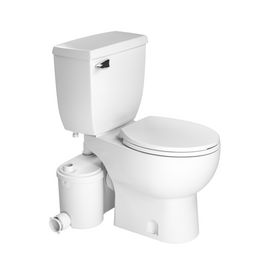
Saniflo Sanibest Pro Combo Macerator System
Saniflo
In Stock
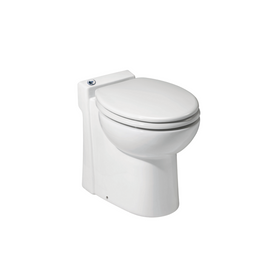
Saniflo 023 Sanicompact Macerating Toilet
Saniflo
In Stock
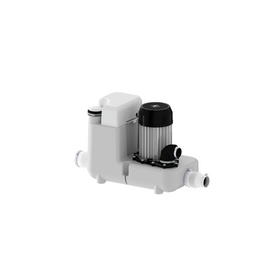
Saniflo 018 Sanicom 1 Heavy-Duty Drain Pump
Saniflo
In Stock
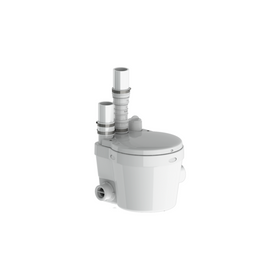
Saniflo 021 Saniswift Drain Pump
Saniflo
In Stock
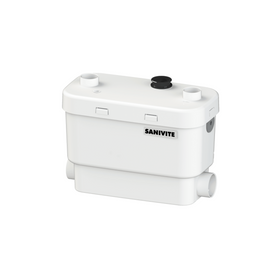
Saniflo 008 Sanivite Drain Pump
Saniflo
In Stock
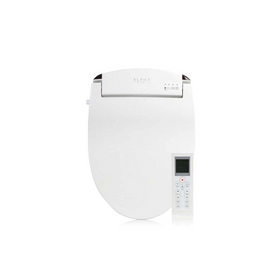
Alpha Bidet Alpha JX Bidet Seat
Alpha Bidet
In Stock
2 Colors
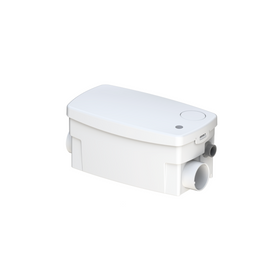
Saniflo 010 Sanishower Drain Pump
Saniflo
In Stock

Saniflo Saniaccess 3 Combo Macerator System
Saniflo
In Stock

Brondell Swash BL97 Advanced Bidet Toilet Seat with Remote Control
Brondell
In Stock

BidetMate 2000 Series Electronic Smart Toilet Seat
BidetMate
Out of Stock
What is a bidet and how does it work?
A bidet is a plumbing fixture or toilet accessory that uses a controlled stream of water to clean your skin after using the toilet. Instead of relying only on dry toilet paper, a bidet washes the area with water and, if desired, a small amount of paper or a towel is used just for drying.
Most residential and light-commercial bidets in North America are either add-on devices you install on an existing toilet or fully integrated toilets with built-in bidet functions. Regardless of format, they share a common set of components that determine how safe, effective, and durable they are.
- Water inlet: connects to your home’s cold (and sometimes hot) water line, often via a T-valve at the toilet’s shutoff.
- Control mechanism: a side lever, dial, or electronic control panel that regulates water pressure, direction, and mode.
- Nozzle(s): extendable or fixed spray arms with specially shaped tips that direct water to the right area.
- Backflow protection: check valves, air gaps, or other devices that prevent used water from flowing back into the potable supply.
- For electric models: a heating system, sensors, and a power supply for warm water, heated seats, and advanced functions.
When you turn a bidet on, household water flows through internal valves, out the nozzle, and into the toilet bowl area. That process sounds simple, but the design and materials of those internal parts are where lower-quality products often fail—through leaks, inconsistent spray, or components that wear out quickly.
Main types of bidets: attachments vs seats vs integrated toilets
The first choice most homeowners make is between three broad categories: a bidet attachment that sandwiches under the existing seat, a replacement bidet seat, or a fully integrated bidet toilet. Each has trade-offs in cost, complexity, comfort, and reliability.
Bidet attachments: the simplest entry point
Bidet attachments are slim panels that install between your toilet bowl and existing seat. They typically connect only to the cold-water line and use a side dial or lever for simple control. For many households, they are the lowest-cost way to try a bidet without major plumbing changes.
Because they are non-electric and mechanically simple, attachments tend to have fewer failure points than complex electronic seats—as long as the valves, hoses, and mounting hardware are sturdy. Their simplicity, however, also limits features compared to higher-end options.
- Pros: lower upfront cost, no electrical outlet required, quick install, fewer electronics to fail, good for basic cleaning.
- Cons: typically cold water only, fewer adjustments, may feel less refined, some ultra-budget models use weaker plastics and basic valves that can leak.
- Best for: budget-conscious buyers, renters (where allowed), second bathrooms, and light-commercial restrooms where electricity at the toilet is not available.
Bidet seats: the most popular all-around option
Bidet seats replace your existing toilet seat with a new seat that includes built-in bidet functions. Non-electric seats offer mechanical controls and basic wash modes, while electric bidet seats add warm water, heated seating, and more precise adjustability.
This format is popular because it balances comfort and practicality. You keep your existing toilet bowl but gain more functionality than a slim attachment can provide. Build quality and engineering vary widely, however, especially in electric seats where heaters, sensors, and electronics come into play.
- Pros: broad feature range, more comfortable seating, can offer warm water and air, integrates neatly with the toilet, good long-term upgrade for main bathrooms.
- Cons: electric versions require a nearby GFCI outlet, higher cost than attachments, more components that can wear or fail over time.
- Best for: primary bathrooms in homes and higher-end light-commercial spaces where comfort and adjustability matter and electrical access is feasible.
Integrated bidet toilets: a fully built-in system
Integrated bidet toilets (sometimes called bidet toilet combos) combine the toilet bowl, flushing system, and bidet functions in a single, factory-designed unit. Brands like TOTO and American Standard are well-known in this category, and several others offer similar systems.
These units are engineered as complete systems, which can result in better overall fit and finish, cleaner lines, and advanced features. At the same time, they are the costliest option, and replacement or repair may be more specialized than swapping a seat or attachment.
- Pros: seamless look, very stable mounting, often more sophisticated spray patterns and user presets, optimized flushing and bidet performance as a single system.
- Cons: highest upfront cost, more complex installation, may require professional plumbing and electrical work, harder to move if you relocate.
- Best for: long-term homeowners planning a bathroom remodel, high-traffic main bathrooms, and light-commercial settings where durability and ease of cleaning are priorities.
Electric vs non-electric bidets: which is better?
Electric and non-electric bidets can both be reliable and effective. The better option for your home depends on your priorities: comfort, simplicity, availability of electrical power, and willingness to maintain more complex components. Understanding the differences helps you avoid overpaying for features you may not use—or under-buying and regretting a bare-bones experience.
How non-electric bidets work
Non-electric bidet attachments and seats rely entirely on household water pressure and mechanical controls. You turn a dial or lever, water flows through a simple valve, and the nozzle extends to spray. Temperature depends on the water source: most connect to cold water only, though some models can be plumbed to both hot and cold with a mixing valve.
Because there is no electric heater, non-electric bidets avoid issues like burnt-out heating elements, control-board failures, or sensor malfunctions. Their longevity depends largely on the quality of valves, seals, and plastics. When these parts are manufactured to a decent standard, non-electric bidets can provide many years of reliable service with minimal maintenance.
- Advantages: simpler design, fewer parts to break, no need for a new outlet, usually lower lifetime energy use, often easier DIY installation.
- Limitations: limited temperature control (unless connected to a hot line), fewer spray modes, typically no heated seat or air-drying.
How electric bidets work
Electric bidet seats and integrated toilets add an internal water heater, heated seat elements, and a control system—either side panels or remote controls. Many include advanced functions such as oscillating or pulsating sprays, warm air dryers, seat occupancy sensors, and automatic nozzle positioning.
These features can significantly improve comfort, especially in colder climates or for users with mobility or sensitivity issues. However, they also introduce more components that must be safely designed, certified, and tested. Reputable brands typically submit their electric bidets to third-party safety testing and incorporate safeguards like ground-fault protection, thermal cutoffs, and moisture-resistant housings.
- Advantages: warm water on demand, heated seating, more precise spray control, programmable user settings, features that can be especially helpful for older adults and people with limited dexterity.
- Limitations: need a GFCI-protected electrical outlet close to the toilet, higher upfront and potential repair costs, more complex installation and troubleshooting.
Which is more reliable over time?
From a purely mechanical standpoint, non-electric bidets have fewer failure points and can often outlast cheaper electric units. But a well-engineered electric bidet from an established manufacturer can also be highly reliable when installed correctly and used within its design limits.
The most common issues with low-cost electric bidets include poorly insulated wiring, under-rated heaters, and circuit boards that fail when exposed to humidity or voltage spikes. When comparing options, look for clear electrical ratings, visible safety marks from recognized testing labs, and a warranty that reflects confidence in the product’s lifespan—not just the minimum legally required coverage.
How to evaluate bidet build quality and durability
Build quality is the single biggest factor that determines whether your bidet becomes a long-term fixture or a short-lived experiment. Many issues homeowners experience—like leaks, weak spray, or cracked housings—trace back to materials and engineering rather than the basic concept of the bidet itself.
Key components that affect lifespan
Pay close attention to how the following parts are designed and described. Even if you are shopping online, product descriptions, technical manuals, and user reviews can reveal how seriously a manufacturer approaches durability.
- Valves and internal plumbing: Look for mention of metal or high-grade polymer valves, rather than generic, unlisted plastics. The valve must handle household water pressure and frequent cycling without sticking or cracking.
- Supply hoses and fittings: Braided stainless-steel hoses or well-rated polymer hoses with solid brass fittings are generally more robust than thin, unreinforced tubing and mystery-metal connectors.
- Nozzle mechanism: Nozzles that retract behind a door or within the seat when not in use are less exposed to impact and contaminants. Check whether nozzle tips are replaceable if they clog or wear.
- Seat and lid materials: Thicker polypropylene or duroplast plastics tend to resist cracking and discoloration better than very thin, flexy plastic. Hinges and dampers should feel solid, not loose or rattling.
- Electronics housing (for electric models): Control boards and heaters should be isolated from direct water exposure. Enclosures with gaskets and clear routing for condensation are signs of thoughtful design.
Established manufacturers such as TOTO, Brondell, American Standard, Alpha Bidet, and Bidet Mate typically publish more detailed specifications for these components than generic or ultra-low-cost alternatives. You should be able to see at least basic information about materials, test standards, and ratings rather than vague phrases like “premium plastic” or “durable hose.”
Signs of robust engineering vs corner-cutting
While you cannot see inside a sealed bidet, there are still practical clues that separate carefully engineered products from those that prioritize low cost above all else.
- Weight and rigidity: A slightly heavier seat or attachment with minimal flex, especially around the mounting area, often indicates thicker plastics and reinforcing ribs.
- Fasteners and brackets: Stainless-steel bolts, metal brackets, or high-grade reinforced plastic mounts are preferable to thin, brittle hardware that can loosen or snap.
- Detailed manuals: Clear installation and maintenance instructions usually reflect a manufacturer that invests in support and anticipates real-world issues.
- Availability of replacement parts: The option to purchase new nozzles, hoses, or remotes suggests a design intended to be maintained, not simply discarded at the first failure.
- Warranty length and terms: Multi-year warranties on parts and limited coverage on labor or electronics are more common among established brands than among the lowest-cost imports.
None of these factors guarantee perfection, but taken together they paint a picture of how long the bidet is likely to last with everyday use in a home or small commercial setting.
Bidet safety fundamentals: water, electricity, and hygiene
Because bidets interface with both potable water and, in the case of electric models, household electricity, safety is more than just a comfort issue. Choosing a product that follows established standards and installing it correctly reduces the risk of leaks, contamination, or electrical problems.
Backflow prevention and plumbing safety
Backflow prevention ensures that water from the bidet—the side that may be exposed to waste—cannot flow backward into your drinking water supply. Many local plumbing codes require backflow protection for fixtures connected downstream of the toilet’s shutoff valve.
- Built-in check valves: One-way valves inside the bidet assembly that allow water to flow into the unit but not back.
- Air gaps or vacuum breakers: Devices that introduce a small gap or vent so that negative pressure cannot pull used water back into supply lines.
- Certified fittings: Connectors tested to withstand household pressure and temperature without bursting or leaking.
Established manufacturers often state that their products incorporate specific backflow prevention methods and reference the plumbing standards they are designed to meet. Super-low-cost products may not mention backflow at all or rely on a single low-grade check valve, which can be a point of vulnerability over time.
Electrical safety for bidet seats and integrated toilets
Electric bidets sit in a damp environment and receive regular contact from users, so electrical safety should not be an afterthought. Reputable manufacturers submit their products to third-party labs that certify compliance with relevant electrical and appliance standards.
- Safety marks: Look for marks from recognized organizations such as UL, ETL, CSA, TUV, or similar, depending on your region. These indicate the product’s design was tested for electrical safety.
- GFCI protection: Electric bidets should be plugged into a ground-fault circuit interrupter outlet to reduce the risk of shock in the event of moisture intrusion or damage.
- Ingress protection: While not always advertised, higher-quality designs include enclosures and seals that manage condensation and splashes away from sensitive components.
- Overheat safeguards: Heaters should include temperature sensors and cutoffs that prevent overheating in the event of a control failure.
If a bidet’s product listing or manual does not mention any electrical safety marks or explicitly warns against using GFCI outlets, that is a red flag. Electric models from brands like TOTO, Brondell, American Standard, Alpha Bidet, and Bidet Mate generally provide clear guidance here, though you should still verify the exact markings on the unit you are considering.
Hygiene, nozzle cleaning, and user health
A well-designed bidet should make it easy to keep the nozzle and surrounding surfaces clean. This matters for both user comfort and long-term reliability, since mineral buildup and debris can affect spray performance over time.
- Self-cleaning nozzles: Many bidets automatically rinse the nozzle before and after each use, helping flush away residue.
- Manual cleaning modes: A dedicated nozzle-cleaning setting or the ability to extend the nozzle for manual wiping can simplify routine maintenance.
- Replaceable tips: Some designs allow you to swap out nozzle tips if they become damaged or heavily scaled over time.
- Smooth, easy-to-wipe surfaces: Fewer crevices and exposed fasteners make it easier to clean around the seat and attachment.
For sensitive users—such as those with certain skin conditions or recovering from surgery—the ability to adjust water pressure and temperature gently is also a safety factor. A bidet that jumps from off to very high pressure can cause discomfort, which is more common in low-cost designs with coarse or poorly calibrated controls.
Features that actually matter vs marketing extras
Bidet marketing often highlights long lists of features: oscillating sprays, pulsing massage, multiple memory settings, colored night-lights, and more. Some of these can be genuinely useful, while others add complexity without improving everyday use. When evaluating options, prioritize a small set of features that affect comfort, cleanliness, and longevity.
Core functional features to prioritize
For most households, the following features have the greatest impact on daily experience. They are also areas where better brands tend to invest in more precise engineering rather than just adding options for the spec sheet.
- Adjustable water pressure: Fine control from very gentle to moderately strong helps accommodate different users and situations without discomfort.
- Adjustable nozzle position: The ability to shift the spray forward or backward improves effectiveness and reduces the need to shift your body awkwardly.
- Reliable self-cleaning: Automatic pre- and post-use rinsing of the nozzle is more than a convenience; it reduces buildup and helps maintain consistent spray patterns.
- Warm water (for electric models): In colder homes, warm water can make the difference between using the bidet daily and avoiding it. Instant (tankless) heaters often provide more consistent temperature than small internal tanks, especially in high-use settings.
- Heated seat (for electric models): Particularly valuable in cool climates or for people who are seated for longer periods, a heated seat can significantly increase perceived comfort.
- Soft-close seat and lid: This reduces wear on hinges and prevents slamming, which can damage both the lid and internal components over time.
If you have specific needs—such as limited mobility or a desire to reduce bending—wireless remotes, user presets, and automatic lids may also be worth prioritizing. For others, these may feel like nice extras but not core requirements.
“Nice-to-have” extras and when they matter
Features like oscillating spray patterns, deodorizing systems, night-lights, and built-in air dryers can enhance the experience, but their implementation varies widely. In higher-quality products, these extras are integrated in ways that do not compromise reliability. In the lowest-cost models, similar features may be underpowered or unreliable.
- Warm air dryers: Helpful for those who want to minimize paper use, but may take longer than expected to fully dry. Check for adjustable temperature and airflow.
- Deodorizing filters: Can help with odor control in small bathrooms. Replacement filter availability is important if you want this feature to remain effective.
- Night-lights: Low power draw and no moving parts make this a low-risk extra, but it should not be the deciding factor between otherwise very different products.
- User memory presets: Especially useful in multi-user households where people have different preferences for temperature and pressure.
If your budget is limited, it usually makes more sense to choose a simpler model with high-quality fundamental components than a low-cost model that advertises a long list of extras with unknown long-term reliability.
Why very low-cost bidets often underperform or fail early
Ultra-low-cost bidets have made it easier than ever to experiment with water cleansing. However, there is a clear trade-off: to reach extremely low price points, manufacturers must reduce material quality, testing, or both. Over time, many of these shortcuts become visible as performance issues, leaks, and early failures.
Common failure points in cheap bidet attachments and seats
Reports from homeowners and installers highlight a few recurring weak spots in the lowest-cost bidets, particularly those from unbranded or generic sources. These issues are not universal, but their frequency is high enough that they are worth understanding before buying solely on price.
- Leaking T-valves and hoses: Thin, low-grade plastics or poorly machined fittings can develop drips or sudden failures, especially under constant pressure.
- Cracking housings: Seats and attachments made with brittle plastic can crack around mounting points or hinge areas after relatively short use.
- Sticky or jerky controls: Rough mechanical valves can make it hard to fine-tune water pressure, leading to sudden surges that are uncomfortable and hard on components.
- Nozzle misalignment: Poorly designed nozzles may not spray where expected, or they may weaken their spray pattern over time due to internal scaling and lack of effective self-cleaning.
- Unreliable electronics: Inexpensive circuit boards, under-rated capacitors, and minimal protective coatings can result in electric models failing within a short period, especially in humid bathrooms.
Some of these problems can be mitigated with frequent inspection and maintenance, but they can also erase the savings of a low purchase price if you must replace the unit more often or deal with water damage.
Hidden costs of going too cheap
Beyond the immediate purchase price, very low-cost bidets can create additional costs and risks that are easy to overlook. A leak that goes unnoticed, for example, can damage flooring or ceilings below. Replacing a failed unit frequently adds up in both money and time, especially once you account for reinstalling hoses or resealing fixtures.
- Shorter lifespan: Frequent replacements can end up costing as much or more than a higher-quality unit that lasts for many years.
- Water damage risk: Even small leaks in hoses or valves can cause significant damage over time if not detected quickly.
- Inconsistent experience: Erratic spray pressure, noisy valves, or poor nozzle aim can discourage regular use, negating the benefits of having a bidet at all.
- Limited or no support: Generic products may offer minimal documentation, no replacement parts, and little recourse if something goes wrong.
This does not mean that every affordable bidet is problematic. Many established brands offer entry-level models that balance cost with reasonable durability and support. The key is to differentiate those from options that reach low prices primarily by cutting corners on safety, quality control, or basic materials.
How to choose the right bidet for your bathroom
Selecting a bidet is easier when you break the decision into a few structured steps: compatibility with your existing toilet and plumbing, clarity about your must-have features, and honest alignment with your budget and expectations for lifespan.
Step 1: Check your toilet and bathroom layout
Start by confirming that your current toilet and bathroom can physically accommodate the type of bidet you are considering. This avoids surprises during installation and helps you narrow choices quickly.
- Bowl shape: Many bidet seats are designed for either elongated or round bowls. Measure from the mounting holes to the front of the bowl and compare with manufacturer guidelines.
- Mounting hole spacing: Confirm that your toilet’s seat bolt spacing falls within the range supported by the bidet seat or attachment.
- Clearance around the tank: Some attachments and seats require a certain amount of clearance between the mounting area and the tank to fit their hardware and controls.
- Access to the shutoff valve: You will need space to install a T-valve or similar connector. Tight, recessed shutoffs may complicate installation.
- Electrical access (for electric models): A GFCI outlet should be within the cable length recommended by the manufacturer, without needing risky extension cords.
Integrated bidet toilets require more comprehensive planning, including rough-in distance from the wall, drain configuration, and sometimes wall reinforcement for in-wall tanks. For those, working with a licensed plumber or experienced installer is often worthwhile.
Step 2: Decide between attachment, seat, or integrated toilet
Using your layout constraints and priorities, choose the format that best fits how you use the bathroom and how long you plan to stay in the space. For example, homeowners planning a renovation might lean toward an integrated unit, while renters may prefer an attachment that can be removed later if allowed by their lease.
- Choose an attachment if you want the lowest-cost, simplest upgrade and are comfortable with cold water and basic controls.
- Choose a non-electric seat if you want better ergonomics and more refined controls without needing an outlet, and you are content with unheated or mixed-temperature water.
- Choose an electric seat if you prioritize warm water, heated seating, and tailored settings in a primary bathroom where you have or can add a GFCI outlet.
- Choose an integrated bidet toilet if you are undertaking a larger project, plan to stay long-term, and want a seamless solution with fewer external hoses and joints to clean around.
In a light-commercial setting—such as a small office or boutique—simple, sturdy attachments or non-electric seats often make sense for shared restrooms, while higher-end electric seats or integrated units may suit private staff or client bathrooms.
Step 3: Set a realistic budget for quality
Bidets span a wide price range. Rather than looking for the lowest possible price or assuming the most expensive option is always best, consider what level of build quality and support you expect over the life of the product.
- Entry-level attachments and non-electric seats: You can find functional models at modest prices from established brands, offering basic cleaning and reasonable durability.
- Mid-range electric seats: Often include warm water, heated seating, and adjustable nozzles, with more robust enclosures and support from known manufacturers.
- High-end electric seats and integrated toilets: Add premium materials, advanced controls, and refined aesthetics. These cost more, but often come with stronger warranties and parts availability.
If you are deciding between an ultra-low-cost unknown product and an established brand’s entry-level model at a slightly higher price, consider the added value of reliable support, clearer documentation, and a track record in plumbing fixtures and appliances.
Step 4: Confirm safety certifications and warranty
Before finalizing your choice, take a moment to confirm the safety and support details that may not be as eye-catching as feature lists but are essential for long-term peace of mind.
- Look for recognized electrical safety marks on electric models and verify they match the voltage and region where you will use the product.
- Check whether the product documentation mentions compliance with any relevant plumbing or appliance standards, especially for backflow prevention.
- Review the warranty length and what it covers: parts, electronics, finish, and labor. Longer, clearer warranties suggest greater confidence in durability.
- Confirm that customer support contact details are easy to find and that replacement parts, if needed, can be sourced without difficulty.
Manufacturers like TOTO, Brondell, American Standard, Alpha Bidet, and Bidet Mate typically publish this information prominently. If you have to dig to find basic safety or warranty details—or cannot find them at all—it may be a reason to reconsider.
Installation and maintenance tips for long-term reliability
Even the best-designed bidet depends on proper installation and care. Taking a few careful steps at the beginning and establishing simple maintenance habits can significantly extend lifespan and reduce the likelihood of leaks or other problems.
DIY vs professional installation
Most non-electric attachments and seats are designed for capable DIY installation, often using only basic hand tools. Electric seats and integrated toilets may still be within reach for experienced DIYers, but you should be honest about your comfort with plumbing and electrical work.
- DIY is more feasible when: shutoff valves are accessible, the toilet is standard, and no new electrical work is required beyond plugging into an existing GFCI outlet.
- Professional help is advisable when: valves are corroded or inaccessible, new outlets or circuits are needed, or you are installing an integrated unit that modifies the drain or rough-in.
- Always follow the manufacturer’s torque recommendations and sequence for tightening fittings and mounting hardware to avoid cracking porcelain or plastic.
If you are installing in a light-commercial space, professional help is often the safer route to ensure local code compliance, especially for backflow prevention and electrical connections.
Routine maintenance practices
Bidets do not require intensive upkeep, but a few periodic checks help maintain performance and catch potential issues before they escalate.
- Inspect hoses and fittings: Every few months, look for signs of moisture, corrosion, or mineral buildup around connections and under the tank.
- Clean the nozzle area: Follow the manufacturer’s instructions to wipe the nozzle and surrounding surfaces, and use any dedicated cleaning mode if available.
- Descale if needed: In hard-water areas, consider a periodic gentle descaling routine recommended by the manufacturer to prevent nozzle and valve clogging.
- Test safety functions: For electric models, occasionally test GFCI outlets and observe that heaters and sensors behave as expected.
- Replace filters or consumables: If your bidet includes deodorizing filters or water filters, follow the suggested replacement interval to keep them effective.
Staying within the manufacturer’s recommended pressure limits and temperature settings also helps avoid stressing valves, seals, and heaters beyond their design.
Comparing established bidet brands vs generic options
Brand names alone do not guarantee a perfect product, but established manufacturers have more to lose from quality lapses and safety issues. Companies like TOTO, Brondell, American Standard, Alpha Bidet, and Bidet Mate have invested in plumbing fixture and appliance design for years, often publishing clear technical data, safety marks, and support pathways.
Generic or unbranded products may serve as an inexpensive introduction to bidets, but they sometimes lack the documentation and support that homeowners and facility managers look for when planning long-term installations.
- Technical transparency: Established brands usually list power consumption, flow rates, compatible bowl shapes, and key materials more clearly than generic listings.
- Support networks: Many recognized manufacturers provide customer service phone lines, online troubleshooting guides, and spare parts ordering.
- Longer product cycles: Branded models often stay in production long enough that parts and accessories remain available for years, reducing waste if a single component fails.
- Consistency across models: When a company engineers both plumbing and electronics across a range of products, improvements in one model can inform others, leading to gradual reliability gains.
This does not mean you must choose a high-end model from a major brand, but using established manufacturers as reference points can help you judge whether a significantly cheaper alternative is cutting essential corners or merely offering fewer extras.
Bidets in light-commercial settings: what to consider
For small offices, wellness studios, and other light-commercial spaces, bidets can enhance comfort and offer a differentiating amenity. At the same time, shared bathrooms see more users, including people unfamiliar with bidets, so simplicity, robustness, and clear instructions become even more important.
Choosing for shared restrooms
In shared settings, overly complex controls or delicate components can lead to misuse or faster wear. Many owners find that non-electric attachments or sturdy, simple seats offer a good balance between functionality and resilience.
- Prioritize intuitive controls: Clearly labeled knobs or simple buttons make it easier for first-time users to operate the bidet without confusion.
- Limit fragile extras: Features like remote controls, decorative lighting, or thin lids may be more vulnerable in busy spaces.
- Support easy cleaning: Smooth exterior surfaces and minimal exposed hoses help custodial staff maintain hygiene quickly.
- Document usage: Simple signage explaining basic operation and what not to do can reduce accidental damage.
Electric seats and integrated units can still work in light-commercial environments—such as private client bathrooms or executive restrooms—but you may want to reserve the most feature-rich designs for locations where users are likely to be more familiar and careful.
Environmental and comfort benefits: beyond the gimmick
While this guide focuses on reliability and safety, it is worth noting the broader impacts that motivate many homeowners and light-commercial owners to adopt bidets. Used thoughtfully, bidets can reduce toilet paper consumption, improve comfort for people with sensitive skin, and support aging-in-place by making cleaning more manageable.
- Reduced paper use: Many households find they use significantly less toilet paper for cleaning, relying more on water and a small amount of paper for drying.
- Improved comfort: Gentle water cleaning can be kinder to the skin than repeated wiping, especially for people with hemorrhoids, irritation, or certain medical conditions.
- Accessibility: For some users with mobility challenges, a bidet’s targeted spray can make personal hygiene more manageable without assistance.
- Potential long-term savings: Reduced paper usage and extended fixture lifespan can offset some of the upfront cost of a higher-quality bidet.
These benefits depend on consistent use over time, which is more likely when your bidet feels comfortable, intuitive, and dependable. That is another reason why focusing on quality and appropriate features tends to pay off more than chasing the lowest price or the most elaborate feature list.
Putting it all together: building a reliable bidet short list
By this point, you have seen how different types of bidets work, what separates electric from non-electric designs, and why build quality and safety matter. Turning that information into an actual purchase decision can be as simple as creating a concise checklist and comparing a few candidates side by side.
- Confirm compatibility: Make sure any short-listed model fits your toilet bowl shape, mounting hole spacing, and bathroom layout.
- Choose a type: Decide whether an attachment, seat, or integrated toilet makes the most sense for your timeframe, budget, and space.
- Electric vs non-electric: Consider climate, available outlets, and the importance of warm water and heated seating for your household or facility.
- Evaluate build and safety: Look for robust valves, quality hoses, backflow prevention, safety marks, and clear warranty terms.
- Prioritize core features: Focus on adjustable pressure, reliable nozzle cleaning, comfortable seating, and stable mounting before optional extras.
- Compare total value: Balance purchase price with expected lifespan, support availability, and the potential costs of leakage or early failure.
Using established brands such as TOTO, Brondell, American Standard, Alpha Bidet, and Bidet Mate as benchmarks can help you set expectations, even if you ultimately choose a different product. The more a manufacturer is willing to share about their design, testing, and support, the easier it is to trust that your bidet will serve as a long-term upgrade rather than a short-lived experiment.
Are bidet attachments worth it compared to full bidet seats?
For many homeowners, bidet attachments are a worthwhile first step. They are inexpensive, simple to install, and introduce the core benefit of water cleaning. However, they usually offer only cold water and limited adjustability. If you live in a colder climate, share a bathroom with multiple users, or want warm water and more refined control, a quality bidet seat—especially an electric model—often delivers a more comfortable long-term experience.
Do I really need an electric bidet for warm water?
You can connect some non-electric bidets to both hot and cold water lines using a mixing valve, but this typically requires extra plumbing and may not provide instant, consistent warmth. Electric bidets use internal heaters to maintain or rapidly heat water to a set temperature, which usually results in a more predictable warm spray, especially in frequently used bathrooms. If you are comfortable with cooler water or live in a milder climate, a non-electric model may be sufficient.
Are bidets sanitary and safe for my home’s water supply?
Properly designed and installed bidets are sanitary and safe. They use clean water from the same supply as your sink or shower and direct it through nozzles targeted at the cleaning area. Safety comes from backflow prevention devices—such as check valves and vacuum breakers—that stop used water from flowing back into the potable supply. Choosing a bidet that includes tested backflow protection and following local plumbing codes significantly reduces any risk to your home’s water system.
How long should a good-quality bidet last?
A well-built bidet attachment or non-electric seat can often last many years with simple maintenance, especially if it uses robust valves and hoses. Electric bidet seats and integrated toilets introduce more components that can wear out, such as heaters and control boards, but units from established manufacturers are generally designed with multi-year service life in mind. Checking warranty lengths, availability of replacement parts, and user experiences with long-term ownership can provide realistic expectations for a specific model.
Will a bidet fit on my existing toilet, or do I need a new one?
Most bidet attachments and many bidet seats are designed to work with standard two-piece toilets and some one-piece models. The key factors are bowl shape, bolt spacing, and clearance near the tank. Manufacturers usually provide compatibility charts and measurement guides to help you check fit before buying. If your toilet is an unusual shape or has very limited space around the tank, you may have fewer options, and in some cases an integrated bidet toilet can be a cleaner long-term solution.
Sources
- International Association of Plumbing and Mechanical Officials — Backflow prevention and cross-connection control guidance iapmo.org
- UL Solutions — Product safety certification overview for household appliances ul.com
- TOTO USA — Technical resources and product specifications for bidet seats and integrated toilets totousa.com
- Brondell — Bidet buyer education, installation manuals, and warranty information brondell.com
- American Standard — Residential toilet and bidet product documentation and installation guides americanstandard-us.com
- Alpha Bidet — Product support and component details for electric and non-electric bidet seats alphabidet.com
- Bidet Mate — Owner’s manuals and safety information for electric bidet seats bidetmate.com
Rise
At Rise, we strive to make sustainable home improvement easy and accessible for everyone. Whether you're building or renovating, our thoroughly vetted building products will help you reduce your carbon footprint, lower energy costs, and create a more sustainable living or working environment.
